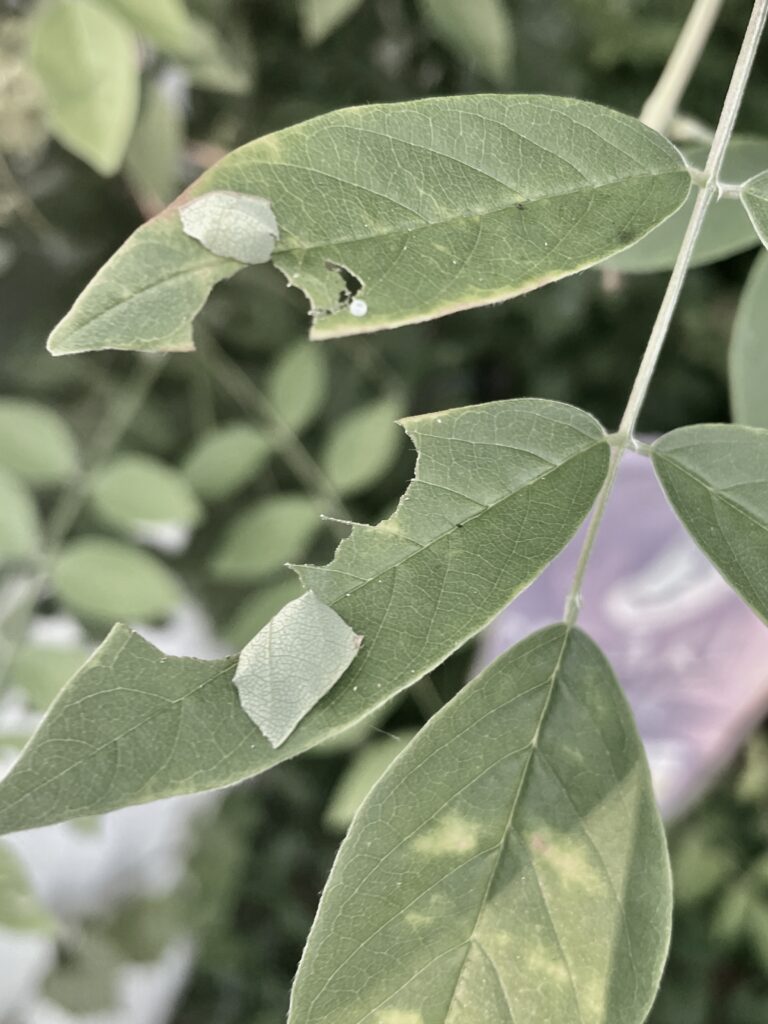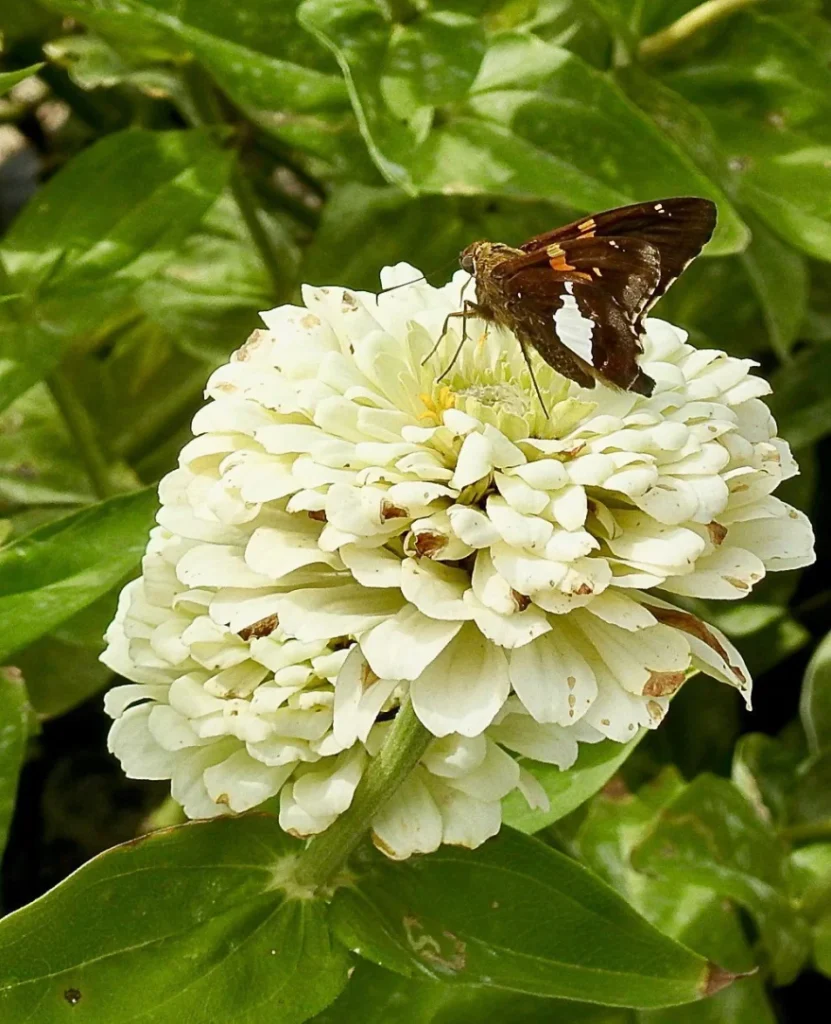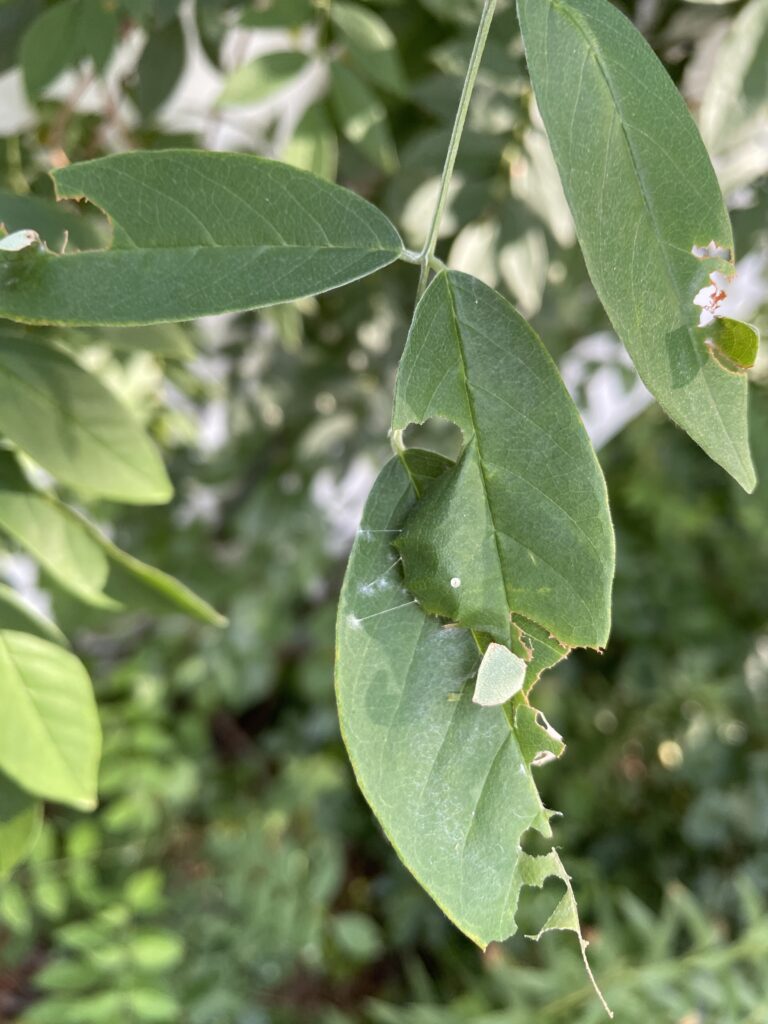
By Mary Reid Barrow
Tiny pale green lean-to shelters began showing up on leaves of my native wisteria vine a couple of weeks ago.
Each shelter was a leaf partially chewed, folded back on the leaf itself and held down with webbing.
I was really excited to see all that activity on my new wisteria. One of the very best reasons to have a native plant is to give native insects the food and shelter they must have to reproduce.
Several species of skipper butterflies use native wisteria as their host plant, among them, the easy-to-recognize, silver-spotted skipper. I have not yet seen a tiny caterpillar leave its leafy shelter at night to dine on wisteria leaves so I’m not sure of the ID. On the other hand, because I love and have photographed silver-spotted skippers in my yard, I like assuming they are my wisteria visitors. Notice the white (silver) slash on the lower half of the wing of the silver spotted below.

After skippers lay eggs on the leaves and the caterpillars hatch, the caterpillars build their leafy shelters, building newer and larger shelters, as they grow, sometime attaching one leaf to another. In the photo below, you not only can see an old shelter, but also a bigger shelter, built with two leaves, as well as a tiny round egg!

When the larvae are full size, they spin their cocoons where they finish transforming into a full grown skipper.
Small brownish or tawny skippers are sometimes mistaken for day-flying moths, but they are in the same family as butterflies. Almost 300 species live in the United States.
A skipper’s antennae give it away! Butterflies have straight antennae with knobs on the end and skippers have antennae with no real knob that are distinctly hooked on the end.
I also have always thought the big black eyes on little skippers are distinctive and cute too.
Once I learned a little about skippers, I always stop to look at them closely and try to photograph them, but it’s hard. True to their name, they don’t stay still for long but skip around the garden nectaring and doing all the right things.
They pollinate flowers and veggies and provide food for birds and other critters– doing their part to make the world go round.